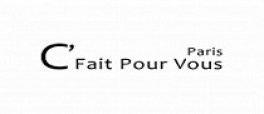Clothing fashion wear trends
Welcome to our fashion shop
How we perceive fashion, is a representation of how we see ourselves. It is an insight into the mind of the wearer. A statement of intent. How you are perceived is usually how you are received. It is with this mindset that we as a small independent company are tailoring our vision into grand implementations for our clientele. Our menswear line, oozes with uniqueness. It appeals to your self worth. We try to make sure that what we offer is unique to you. Our line features clothing in all flavors with a mindset that is distinct to niche tastes. Everyone wants to feel special. We go a step further. WE ENSURE IT. Fashion for us should be seamless, stylish and an embodiment of satisfaction. A force of attraction that is the wearer’s to own and exude. A calling, a magnetism so strong it must be owned to be curtailed. We have here, a collection, yours to own. Take a gander and be rewarded.Your outfitting sense speaks a great deal about your social image. We all enjoy compliments & acknowledgement our outfit, especially from colleagues and acquaintances. Usually, women tend to be more keen on choice of clothing outfit compared to males. Every woman has distinct body features, height, configuration, as a result it is essential to chose outfit that compliments and enhance your distinct figure, that is style. One should not really stick to popular trends blindly, due concern of social trends. By recognizing and appreciating our body's natural shape, women can enhance their esteem, confidence by dressing the path. Nevertheless, this those not means you have to break the bank, or spend a fortune achieving your look. You can get that fabulous dress, at affordable price, haute couture label, with low budget, yet quality fabric, independent local (EU) fashion designers, styles, this independent online clothing stores, tend to offer more form fit outfit, high standard finishing, at highly competitive prices. Apparently the internet, has open the window to ever bigger range of choice to the consumers, and driving the need for fashion label improve their quality, standard and prices, our loose brand quality. Women can save big on their fashion budgets, by registering on such sites, or follow them on respective social media, some offer clothing repairs for registered members, custom made tailoring, where measurements, style and visual viewing done skype. This site due to their niche product and clientiel, provide, unique style apparels, classic and contemporary fashion apparels, specializing in a range of fashion categories, like exclusive chiffon gowns, lace cocktail dresses with matching scarfs, complimentary gala faux fur, bargain price flower girl dresses, fashion gifts and jewelries. This sites can save you loads of money, because the quality, style and comfortable of their product is amazing. You will be impress at the uniqueness, standard and quality of this products, another aspect of our outlook, is combination, colors and make up. A slim fit, long satin evening dress, open back, split, matching scarf, with a faux fur is a classic women party choice, that can create with the right choice dress, unforgettable impression, spark friendship, and favorable comments at such social gatherings, we are to others, what we look, since they can not see inside you, so its smart to be aware of who we attract with our choice of outfit, to attract the kind of attention and contact we seek. Women have also range of styles and clothing categories to benefit from this site, you will find viscose, cotton, voile and lace cocktail dress, strapless as well as with shoulder straps from 39.98, this dresses are trendy, durable, and totally well made by Acclaimed fashion label, like Cotton club, Lautinel, Yves Calin, Juju & Christine labels, EU standard clothing, Like party outfit, bridal party gown are also available in numerous styles, forms and alsoesigns. Even so, you should be more conscious of the comfort as an alternative to style. You have to select a gentle going textile rather than stiffer satin or taffeta. No matter whether you want to purchase a get together gown or a bridesmaids outfit, you ought to pay heed to the explaining of the gown. Females furthermore choose cotton party dresses because of their shiny mother nature. That they reflect light superbly and further improve your character. Any kind of party will be unfinished without having a tiny dress. They are short long and also finish considerably higher than the joint size. You will find a few genuinely strong and delightful colors as well as designs of these gowns. They've created you appear amazing along with sexy. The actual hour or so wine glass designed dresses can also be liked by ladies because they produce an best female charm together with slim waist, broad sides as well as broad destroy. A celebration gown can be a assertion of class and elegance. They are very popular from the style business which help to bring a great deal of organization for this industry. These gowns are usually acquirable from variety stores for you to artist merchants. Nevertheless, in case you are unable to get the each of your option then you can certainly furthermore surf them upon different online stores. There are several online retailers that are providing you many bridesmaid or perhaps party dresses.
Women formal party garments
Dresses are outer garments made up of a bodice and a skirt and can be made in one or more pieces. Dresses are generally suitable for both casual and formal wear in the West for women and girls. In the 11th century, women in Europe wore dresses that were similar to men's tunics and were loose, with a hemline reaching to below the knees or lower. By the end of the century, these dresses featured a tighter fit on the arms and women's upper bodies.  Dresses were made snug by featuring slits on the sides of the dress that were pulled tight in order to fit a woman's figure. Starting in the 1550s, middle- and upper-class women in Europe wore dresses which included a smock, stays, kirtle, gown, forepart, sleeves, ruff and a partlet. Undergarments were not worn underneath. In England, Queen Elizabeth dictated what kinds of dresses women were allowed to wear. French women were inspired by Spanish-style bodices and also wore ruffs. French dresses were known as marlottes. In Italy, dresses were known as ropa and semarra. Dresses in the 16th century also displayed surface decoration such as embroidery, with blackwork being especially popular. Women's dresses in Russia during both the 16th and 17th centuries identified a woman's place in society or their family. Holland, as a center of textile production, was a particularly noted area of innovation in dress fashion during the 17th Century. In Spain and Portugal, women wore stomachers while in England and France, dresses became more "naturally" shaped. Lace and slashing were popular decorations. Skirts were full, with regular folds and the overskirt allowed the display of an underskirt of contrasting fabric. Necklines became lower as well. Embroidery that reflected scientific discoveries, such as newly discovered animals and plants were popular. In the British Colonies, multi-piece dresses were also popular, though less luxurious. Wealthy women living in the Spanish or Dutch colonies in the Americas copied the fashions that were popular from their homelands. The three-piece dress, which had a bodice, petticoat and gown, was popular until the last 25 years of the century, in which the mantua, or a one-piece gown, became more popular. Corsets became more important in dresses by the 1680s. Working women, and women in slavery in the Americas, used simple patterns to create shifts, wool or linen petticoats and gowns and cotton dresses. The bottoms of the skirts could be tucked into the waistband when a woman was near a cooking or heating fire. Large, triangular silhouettes were favored during the 18th century, skirts were wide and supported by hoop underskirts. One-piece gowns remained popular until the middle of the century. During the 1760s in France, hoop petticoats were reduced in size. Lighter colors and lighter fabrics were also favored. In Colonial America, women most often wore a gown and petticoat, in which the skirt of the gown opened to reveal the petticoat underneath. Women also had riding habits which consisted of the petticoat, jacket and a waistcoat. French fashion regarding dresses became very fast-changing during the later part of the 18th century. Throughout this period, the length of fashionable dresses varied only slightly, between ankle-length and floor-sweeping. Between 1740 and 1770, the robe à la française was very popular with upper-class women. In France, the Empire style became popular after the French Revolution. This more simple style was also favored by Josephine Bonaparte, wife of Napoleon. Other popular styles during the revolution included tunic dresses and the negligée à la patriot, which featured the red, white and blue colors of the flag. Women's dresses in the 19th century began to be classified by the time of day or purpose of the dress. High-waisted dresses were popular until around 1830. Early nineteenth century dresses in Russia were influenced by Classicism and were made of thin fabrics, with some semi-transparent. Elizabeth Vigée Le Brun wore these types of dresses with a short skirt (reaching to her ankles) when she lived in Russia between 1785 and 1801 and many Russian women copied her style. By the 1840s, Russian women were turning to what was in fashion in Europe. Europeans styles in dresses increased dramatically to the hoopskirt and crinoline-supported styles of the 1860s, then fullness was draped and drawn to the back. Dresses had a "day" bodice with a high neckline and long sleeves, and an "evening" bodice with a low neckline (decollete) and very short sleeves. In Russia, metal hoopskirts were known as "malakhovs." Skirts of the 1860s were heavily decorated. To sleep, women in the American West wore floor-length dresses of white cotton with high collars displaying decoration. Various Native American people, such as the Navajo and the Mescalero Apache began to adapt the designs of their dresses to look more like the European Americans they came in contact with. Navajo women further adapted the European designs, incorporating their own sense of beauty, "creating hózhó." Paper sewing patterns for women to sew their own dresses started to be readily available in the 1860s, when the Butterick Publishing Company began to promote them. These patterns were graded by size, which was a new innovation. The Victorian era's dresses were tight-fitting and decorated with pleats, rouching and frills. Women in the United States who were involved in dress reform in the 1850s found themselves the center of attention, both positive and negative. By 1881, the Rational Dress Society had formed in reaction to the restrictive dress of the era. In the early twentieth century, the look popularized by the Gibson Girl was fashionable. The upper part of women's dresses in the Edwardian era included a "pigeon breast" look that gave way to a corseted waist and an s-shaped silhouette. Women called their dresses "waists" if one-piece, or "shirtwaists," if it consisted of a skirt and a blouse. The bodice of the dresses had a boned lining. Informally, wealthy women wore tea gowns at home. These garments were looser, though not as loose as a "wrapper," and made of expensive fabric and laces. By 1910, the Edwardian look was replaced with a straighter silhouette. French designer, Paul Poiret, had a huge impact on the look of the time. Designs developed by Poiret were available in both boutiques and also in department stores. Popular dresses of the time were one-piece and included lingerie dresses which could be layered. At around the same time, in the United States, the American Ladies Tailors' Association developed a dress called the suffragette suit, which was practical for women to work and move around in. Another innovation of the 1910s was the ready availability of factory-made clothing. Waistlines started out high and by 1915 were below the natural waist. By 1920, waistlines were at hip-level. Between 1910 and 1920 necklines were lower and dresses could be short-sleeved or sleeveless. Women who worked during World War I preferred shorter dresses, which eventually became the dominant style overall. In addition to the shorter dresses, waistlines were looser and the dominant colors were black, white and gray. By 1920, the "new woman" was a trend that saw lighter fabrics and dresses that were easier to put on. Younger women were also setting the trends that older women started to follow. The dresses of the 1920s could be pulled over the head, were short and straight. It was acceptable to wear sleeveless dresses during the day. Flapper dresses were popular until end of the decade. During World War II, dresses were slimmer and inspired by military uniforms. After WWII, the New Look, promoted by Christian Dior was very influential on fashion and the look of women's dresses for about a decade. Since the 1970s, no one dress type or length has dominated fashion for long, with short and ankle-length styles often appearing side by side in fashion magazines and catalogs. In most varieties of formal dress codes in Western cultures, a dress of an appropriate style is mandatory for women. They are also very popular for special occasions such as proms or weddings. For such occasions they, together with blouse and skirt, remain the de facto standard attire for many girls and women. A basic dress is a usually dark-colored dress of simple design which can be worn with various accessories to suit different occasions. Different kinds of jewelry, belts, scarves, and jackets can be worn with the basic dress to dress up or down. A little black dress is an example of a basic dress. A bodycon dress is a tight figure-hugging dress, often made from stretchy material. The name derives from "body confidence" or, originally, "body conscious", transformed into Japanese in the 1980s as "bodikon". A party dress is a dress worn especially for a party. Different types of party such as children's party, cocktail party, garden party and costume party would tend to require different styles of dress. One classic style of party dress for women in modern society is the little black dress.
Dresses were made snug by featuring slits on the sides of the dress that were pulled tight in order to fit a woman's figure. Starting in the 1550s, middle- and upper-class women in Europe wore dresses which included a smock, stays, kirtle, gown, forepart, sleeves, ruff and a partlet. Undergarments were not worn underneath. In England, Queen Elizabeth dictated what kinds of dresses women were allowed to wear. French women were inspired by Spanish-style bodices and also wore ruffs. French dresses were known as marlottes. In Italy, dresses were known as ropa and semarra. Dresses in the 16th century also displayed surface decoration such as embroidery, with blackwork being especially popular. Women's dresses in Russia during both the 16th and 17th centuries identified a woman's place in society or their family. Holland, as a center of textile production, was a particularly noted area of innovation in dress fashion during the 17th Century. In Spain and Portugal, women wore stomachers while in England and France, dresses became more "naturally" shaped. Lace and slashing were popular decorations. Skirts were full, with regular folds and the overskirt allowed the display of an underskirt of contrasting fabric. Necklines became lower as well. Embroidery that reflected scientific discoveries, such as newly discovered animals and plants were popular. In the British Colonies, multi-piece dresses were also popular, though less luxurious. Wealthy women living in the Spanish or Dutch colonies in the Americas copied the fashions that were popular from their homelands. The three-piece dress, which had a bodice, petticoat and gown, was popular until the last 25 years of the century, in which the mantua, or a one-piece gown, became more popular. Corsets became more important in dresses by the 1680s. Working women, and women in slavery in the Americas, used simple patterns to create shifts, wool or linen petticoats and gowns and cotton dresses. The bottoms of the skirts could be tucked into the waistband when a woman was near a cooking or heating fire. Large, triangular silhouettes were favored during the 18th century, skirts were wide and supported by hoop underskirts. One-piece gowns remained popular until the middle of the century. During the 1760s in France, hoop petticoats were reduced in size. Lighter colors and lighter fabrics were also favored. In Colonial America, women most often wore a gown and petticoat, in which the skirt of the gown opened to reveal the petticoat underneath. Women also had riding habits which consisted of the petticoat, jacket and a waistcoat. French fashion regarding dresses became very fast-changing during the later part of the 18th century. Throughout this period, the length of fashionable dresses varied only slightly, between ankle-length and floor-sweeping. Between 1740 and 1770, the robe à la française was very popular with upper-class women. In France, the Empire style became popular after the French Revolution. This more simple style was also favored by Josephine Bonaparte, wife of Napoleon. Other popular styles during the revolution included tunic dresses and the negligée à la patriot, which featured the red, white and blue colors of the flag. Women's dresses in the 19th century began to be classified by the time of day or purpose of the dress. High-waisted dresses were popular until around 1830. Early nineteenth century dresses in Russia were influenced by Classicism and were made of thin fabrics, with some semi-transparent. Elizabeth Vigée Le Brun wore these types of dresses with a short skirt (reaching to her ankles) when she lived in Russia between 1785 and 1801 and many Russian women copied her style. By the 1840s, Russian women were turning to what was in fashion in Europe. Europeans styles in dresses increased dramatically to the hoopskirt and crinoline-supported styles of the 1860s, then fullness was draped and drawn to the back. Dresses had a "day" bodice with a high neckline and long sleeves, and an "evening" bodice with a low neckline (decollete) and very short sleeves. In Russia, metal hoopskirts were known as "malakhovs." Skirts of the 1860s were heavily decorated. To sleep, women in the American West wore floor-length dresses of white cotton with high collars displaying decoration. Various Native American people, such as the Navajo and the Mescalero Apache began to adapt the designs of their dresses to look more like the European Americans they came in contact with. Navajo women further adapted the European designs, incorporating their own sense of beauty, "creating hózhó." Paper sewing patterns for women to sew their own dresses started to be readily available in the 1860s, when the Butterick Publishing Company began to promote them. These patterns were graded by size, which was a new innovation. The Victorian era's dresses were tight-fitting and decorated with pleats, rouching and frills. Women in the United States who were involved in dress reform in the 1850s found themselves the center of attention, both positive and negative. By 1881, the Rational Dress Society had formed in reaction to the restrictive dress of the era. In the early twentieth century, the look popularized by the Gibson Girl was fashionable. The upper part of women's dresses in the Edwardian era included a "pigeon breast" look that gave way to a corseted waist and an s-shaped silhouette. Women called their dresses "waists" if one-piece, or "shirtwaists," if it consisted of a skirt and a blouse. The bodice of the dresses had a boned lining. Informally, wealthy women wore tea gowns at home. These garments were looser, though not as loose as a "wrapper," and made of expensive fabric and laces. By 1910, the Edwardian look was replaced with a straighter silhouette. French designer, Paul Poiret, had a huge impact on the look of the time. Designs developed by Poiret were available in both boutiques and also in department stores. Popular dresses of the time were one-piece and included lingerie dresses which could be layered. At around the same time, in the United States, the American Ladies Tailors' Association developed a dress called the suffragette suit, which was practical for women to work and move around in. Another innovation of the 1910s was the ready availability of factory-made clothing. Waistlines started out high and by 1915 were below the natural waist. By 1920, waistlines were at hip-level. Between 1910 and 1920 necklines were lower and dresses could be short-sleeved or sleeveless. Women who worked during World War I preferred shorter dresses, which eventually became the dominant style overall. In addition to the shorter dresses, waistlines were looser and the dominant colors were black, white and gray. By 1920, the "new woman" was a trend that saw lighter fabrics and dresses that were easier to put on. Younger women were also setting the trends that older women started to follow. The dresses of the 1920s could be pulled over the head, were short and straight. It was acceptable to wear sleeveless dresses during the day. Flapper dresses were popular until end of the decade. During World War II, dresses were slimmer and inspired by military uniforms. After WWII, the New Look, promoted by Christian Dior was very influential on fashion and the look of women's dresses for about a decade. Since the 1970s, no one dress type or length has dominated fashion for long, with short and ankle-length styles often appearing side by side in fashion magazines and catalogs. In most varieties of formal dress codes in Western cultures, a dress of an appropriate style is mandatory for women. They are also very popular for special occasions such as proms or weddings. For such occasions they, together with blouse and skirt, remain the de facto standard attire for many girls and women. A basic dress is a usually dark-colored dress of simple design which can be worn with various accessories to suit different occasions. Different kinds of jewelry, belts, scarves, and jackets can be worn with the basic dress to dress up or down. A little black dress is an example of a basic dress. A bodycon dress is a tight figure-hugging dress, often made from stretchy material. The name derives from "body confidence" or, originally, "body conscious", transformed into Japanese in the 1980s as "bodikon". A party dress is a dress worn especially for a party. Different types of party such as children's party, cocktail party, garden party and costume party would tend to require different styles of dress. One classic style of party dress for women in modern society is the little black dress.


































